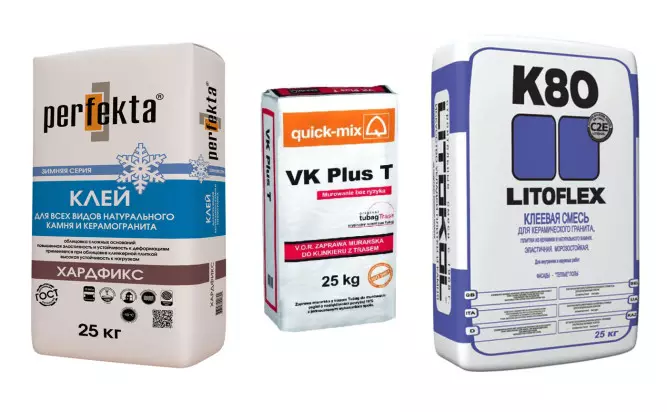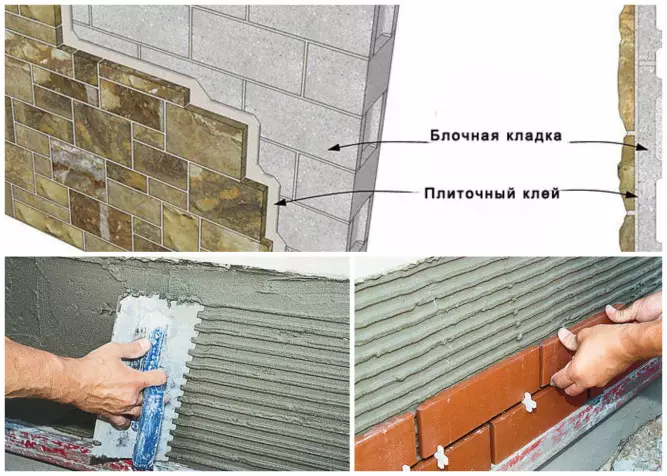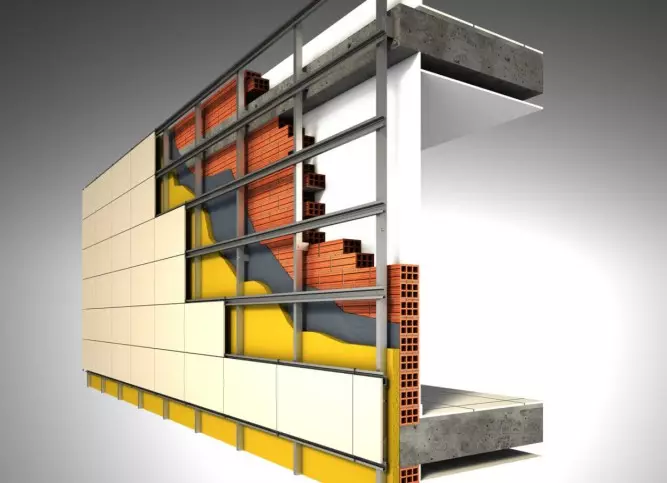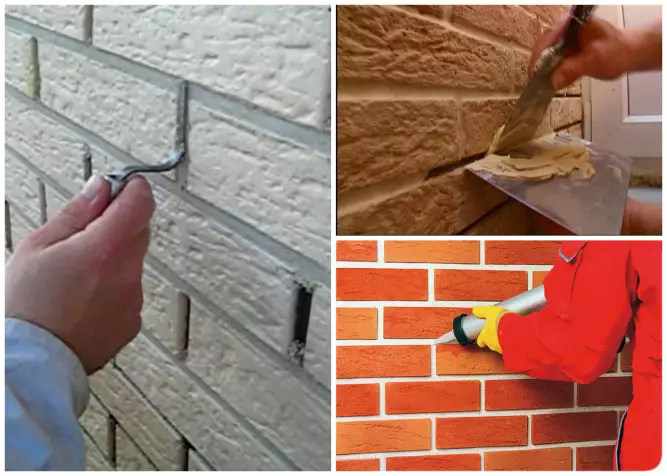For decoration of buildings today, a wide variety of facade facing tiles are used. The main requirements for such materials are their:
- durability;
- strength;
- environmental friendliness;
- decorative;
- wear resistance;
- waterproof;
- light resistance;
- Frost resistance.
For facades, ordinary tile is practically not taken. But these types of finishes, like porcelain stoneware or clinker tiles are the perfect option. The principle of installation is similar to the technology of internal finishing with a cafeter. Nevertheless, there are some nuances, in particular, this applies to the materials used.
Such types of finishes are made from a standard clay mixture for ceramics with the addition of modifying additives and additional minerals. The firing temperature is adjusted to 1300 degrees. Since the material density increases, the weight of each one unit increases. Therefore, it is important to choose quality glue that will withstand a similar load.

For outdoor work, it is recommended to use special mixtures, they are plastic and frostable
The laying of clinker tiles can be made on a homemade mortar from cement and sand, but in this case it is necessary to add plasticizers to it and a means for enhancing frost resistance. If you do not want to risk and prepare a solution with your own hands, buy a mixture in the store for facade works. All necessary additives are already present in it. In addition, there are special types of glue for each type of cladding.
The amount is calculated based on the data specified by the manufacturer. Determine which thickness must be a layer of solution, multiply this indicator to the consumption of the mixture by 1 m2 per millimeter. Then determine the overall area of work, and you will receive a final result. It is better to take with a margin for compensation of irregularities, etc.
Installation on glue
Initially, the solution is applied to the wall and leveled with a toothed spatula. Then the tiles are applied to the treated surface and pressed. After adjusting the position, several millimeters are retreating and the next element is mounted.
The calculation of the thickness of the seams depends on the dimensions of the material. Conditioning by the rectial can be made without junctions.
But how to glue a brick clinker? The decor is done either by the same principle as with porcelain stoneware, or glue is applied directly to the tile itself, especially if you need to make a complex calculation of single elements.
Article on the topic: What wallpaper to choose an wenge color in different rooms

Adhesive
Be sure to suture the seams between bricks. Make it best by applying mastic inside the junction with a bag. Grout does not blur the tiles and lay down to a smooth layer where it is necessary.
Ventilated facade
In some cases, the laying of clinker tiles is carried out without using the adhesive solution. We are talking about the facing of the ventilated facade. In such structures there is a profile fastening. The technology allows you to prevent moisture accumulation on the walls of the house and make an additional warming of the building.

Facing with mounted construction
The calculation of the ventilated facade from clinker or porcelain stoneware is similarly produced as for the previous method. It is important to determine the amount of the profile intended for fastening the cladding. Since putting on the crate to the tile is needed on the principle of spike groove, take care so that the transverse profile covers the entire area at a given interval.
The facade finish is as follows:
- The wall bracket is mounted on the wall, which is supplied with a vertical stand.
- From above, in the middle and from the bottom with a small indentation, general guides are additionally installed as rigidity.
- The free space between the wall of the ventilated facade and the profile crate is filled with insulation.
- Over overlays another material - wind-hydro-proof membrane.
- Depending on the tile width at a predetermined distance, clinker guide profiles are attached from each other.
- In a ready-made "skeleton", bricks are inserted by the trim diagram in the scheme, applying the most firmly to each other.
Filling seams
Installation of the facade tile ends with the trim of the joints between the elements. Even if it comes to the rectified, the application of the grout does not hurt, as it is quite difficult to achieve an ideally dense fit of fragments.
The filling technology of seams involves the use of a construction syringe or a device by the type of confectionery bag. The divorced fugus is laid inside and is supplied to the hole. The seams must be filled with this mass, not reaching the edge of the tile. Thus, the buildings of the building will acquire a more accurate appearance, some lack of installation will be launched and fully protected from the penetration of cold and moisture into the house. Carefully prepare the calculation of the required material.
Article on the topic: Wallpaper with gerberas - a bright solution for the interior of the house

Methods of grouting seams
It is recommended to apply a special water repellent solution over the clinker.
